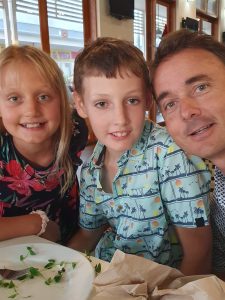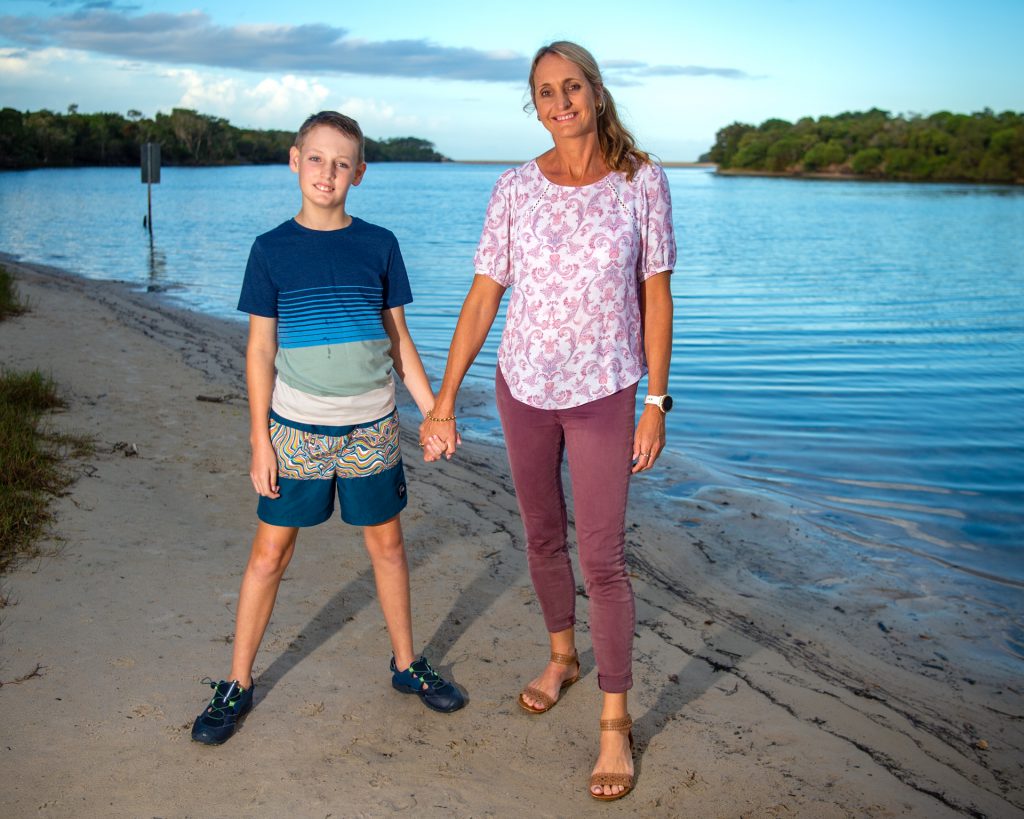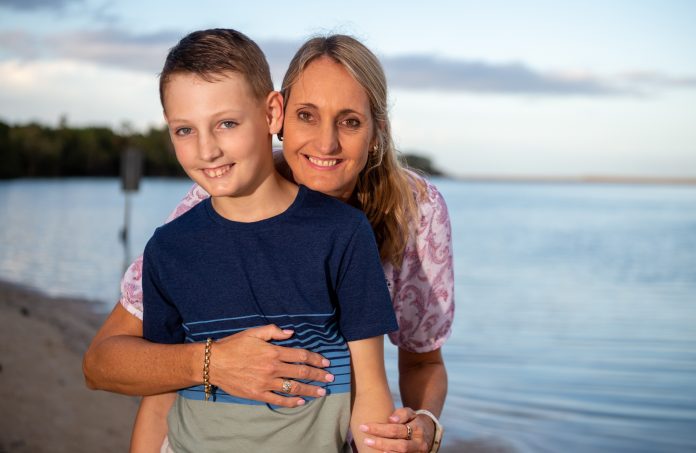As a former Australian and world ironwoman champion and trailblazing female athlete, Kerri Thomas knows all about endurance.
But as a mum, she has witnessed another level of grit and fortitude in her son Tom, 12, who has endured one of the most severe forms of epilepsy since he was a baby.
From eight months old, Tom has suffered frightening epileptic seizures that have become worse as he grows older.
Though each day is different, he often experiences six to eight seizures that can last from two to three minutes, sometimes back to back, and especially at the night.
It’s not known why, but some days are worse than others when he might have as many as 10 attacks which can leave him exhausted and barely able to speak.
Ms Thomas, who was the back-to-back Aussie ironwoman champion in 1998/99, has shared her son’s story to shed light on his devastating disease, Dravet Syndrome, which has no cure, nor any medication to stop the seizures.
“The impact of Dravet Syndrome is not just physical, it is also mental because experiencing consistent seizures is traumatising and exhausting, for Tom and also for us while we are caring for him,” said Ms Thomas.
“It has been devastating and quite isolating for our family.”
There is a glimmer of hope, however, with the first cannabis-based medicine added to the Pharmaceutical Benefits Scheme (PBS) this month to help slow the onset of seizures.
Tom has started taking a medicinal cannabis-based treatment twice a day and Ms Thomas said it appeared to have the least side-effects of the many medicines he’s tried which have impacted his alertness and other functions.

“Every person with the condition is different and different medications will work for them,” said Ms Thomas.
“Giving more families choice for dealing with this condition, is giving them more hope.”
Tom was diagnosed at five with the drug-resistant form of epilepsy but he had been suffering seizures since he was a baby which doctors thought were febrile convulsions that he would likely grow out of.
“When he was eight months old he had a fever and cold and his temperature spiked so we took him to hospital and when we got there he had his first seizure and five minutes later another one,” said Ms Thomas.
“That was our first experience. It was very frightening.”
Contrary to medical opinion, the seizures become more frequent and intense over time and a genetic test eventually revealed a problem on a gene (not inherited) which caused the disease.
Tom’s unpredictable seizures can vary from episodes where he stops and stares for three to four minutes to others where he will stop, sit and then suffer a seizure.
At other times they are more dramatic when Tom might drop and fall on the floor with his eyes rolling and legs and arms shaking.

Ms Thomas said it was not possible to stop or prevent the seizures so as parents they would ensure he was safe and comfortable while supervising.
“It’s not pleasant to watch; it’s draining and exhausting because you don’t like to watch a loved one go through that,” she said.
Tom often emerges feeling exhausted and as the years have passed the attacks also appear to be “chipping away at him” and causing damage that has affected his cognition and motor skills.
“He was a very bright child and could ride his bike without training wheels very young. Now, he faces difficulties with his speech and struggles with coordination,” said Ms Thomas.
But she said her boy was resilient and showed good spirit for someone with such a tragic condition that had no end in sight.
His seizures are happening mostly at night these days, between 1am and 6am, which means Tom can attend school if he’s not too tired from a rough night.
“He’s a happy kid, he’s an outdoors person and he likes to ride his bike and scooter and socialise with people, and he knows how to wind people up; he’s got a bit of spunk and character,” said Ms Thomas.
“He’s quite resilient for someone living with such a condition. When he could easily curl up, he’s having a go and likes to get out and do things.”

Kerri is a strong advocate for other families dealing with Dravet Syndrome and has been pushing for more treatment options.
“The more treatment options there are available to families in positions like mine, the better. Every person with the condition is different and different medications will work for them.
“Dravet doesn’t go away, it’s forever – so giving more families choice for dealing with this condition, is giving them more hope.”





